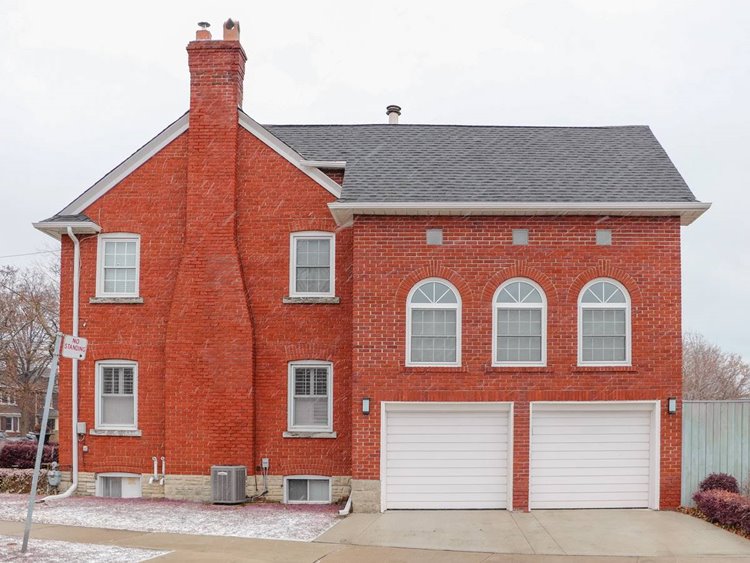How to Stop Air Infiltration in Your Garage

An attached garage is a massive convenience for those who don’t like slogging through snow, rain or frigid temperatures in the dark to get from their car to their house. But while the garage provides protection from the elements it’s not without its downsides. Primary among them is the fact that when builders construct a house in Broomfield they don’t insulate the garage. This makes the garage a cold, clammy place and causes it to suck heat from any adjoining living spaces. Some homeowners try to fix this by ordering a new garage door installation with a heavily insulated door. But that new insulated door won’t do much if cold air is leaking in all around it. In this post, we'll talk about how to stop this kind of air infiltration.
Why Air Infiltration Is an Issue
With an uninsulated garage and a garage door that is allowing air to leak in all around it the inside of your garage is going to be freezing cold in the winter and sweltering hot in the summer. And that’s a problem for a lot of reasons, including:
An icy cold garage is an energy sieve
Having an uninsulated garage with a leaky garage door attached to your home is like having a huge ice cube attached to your house. It’s going to suck warm air out of any adjoining spaces. If you have a bedroom over the garage that room is going to be a nightmare to heat. Even if the garage door is not being opened and closed constantly that frigid space is going to weigh on your heating bills in the winter. Conversely, the garage will likely get baking hot in the summer, making it more expensive to keep your home cool. Even if you don't insulate the entire garage, preventing air infiltration around an older or brand new garage door will go a long way toward eliminating extreme temperatures in the garage.
A leaky, uninsulated garage is basically useless space
If the temperature in your garage is essentially the same as the temperature outside then it is basically useless space. You can forget about setting up a workshop in the garage or setting up some equipment and using it as an exercise space. And don’t even think about creating that man cave you've always wanted. On the other, even if all you do is eliminate air infiltration around the garage door it's going to make a huge difference, and with a space heater or two, you might just create a viable workshop or home gym. (For the man cave you’ll have to insulate the whole garage.)
The cold, cold air is not good for your car
Yeah, cars are tough and a spell of cold weather isn’t going to send them to the junkyard. But prolonged exposure to the kind of cold we get in Colorado is not good for your car and will ultimately reduce its performance and shorten its life. Every time the thermometer dips below freezing it puts stress on engine fluids, causes the tires to become a little less pliable, makes the windshield wipers brittle and wears on the battery. By sealing up the leaks around the garage door you will help create a noticeably warmer environment in the winter and a cooler one in the summer. If it could, your car would thank you.
An uninsulated garage with a leaky door makes a lousy storage space
People naturally tend to think of their garage as a good place to store things they don’t have room for in the house. But if your garage door is leaking air around the edges and the garage is icy cold for several months every year, anything you put out there is going to suffer for it. Rolled up area rugs will experience accelerated aging and wood furniture will become brittle. Even if your garage has high-tech security TVs and other electronics stored in a freezing space will incur damage. Just by sealing up leaks around the garage door, you can make the garage much more agreeable as a storage space.
How to Stop Air Infiltration in Your Garage
Now that we have a better idea of why it's important to prevent your garage from becoming an icebox or oven, let's look at how you can seal up around the garage door to stop air infiltration.
Repair or install a weather seal
The weather seal is a strip of rubber or vinyl installed around the frame of the garage door that covers the space between the frame and the door itself. Damaged or non-existent weather seals are a major source of air infiltration. Go out to your garage and inspect the weather seal. If it’s damaged or simply not there call A Better Garage Door. We’ll install one for you in a jiffy.
Replace the bottom rubber
Along the bottom of every garage door is a rubber strip that seals the area between the bottom of the door and the ground. If this is damaged it will allow cold or hot air to rush into the garage, making it unbearable. Open the garage door and inspect this rubber strip. If it’s in poor shape give us a ring. We’ll install a new one for you.
Quality Garage Door Repair in Parker and Broomfield
A Better Garage Door has been providing high-quality, affordable garage door installation and repairs for more than 23 years. To find us search for “garage door installers near me” or simply give us a call at (303) 920-2267.